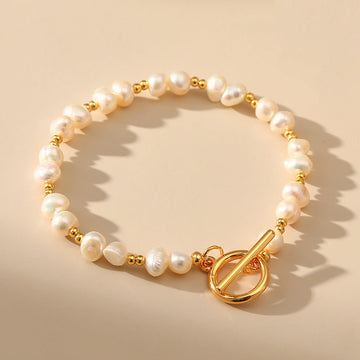The Fascinating Cat's Eye Effect in Tiger's Eye Bracelets and Its Connection to Craftsmanship
Tiger’s eye, a striking gemstone known for its golden-brown hue and shimmering bands, has captivated jewelry enthusiasts for centuries. One of its most alluring features is the cat’s eye effect, a phenomenon that creates a luminous, slit-like reflection across the stone’s surface. This optical illusion is not just a natural marvel but also a result of meticulous craftsmanship. Below, we explore how this effect is achieved and the role of打磨工艺 (polishing techniques) in enhancing its beauty.
Understanding the Cat’s Eye Effect in Tiger’s Eye
The cat’s eye effect, scientifically termed chatoyancy, occurs when light interacts with parallel fibrous inclusions within the stone. In tiger’s eye, these inclusions are typically composed of crocidolite asbestos that has been replaced by silica over time. When light hits the stone at a specific angle, it reflects off these fibers, creating a bright, moving line reminiscent of a cat’s pupil.
For this effect to be pronounced, the stone must be cut and polished in a way that aligns these fibers perfectly. A misaligned cut can diminish or eliminate the chatoyancy, making the craftsmanship behind each bracelet crucial.
The Role of Cutting Techniques in Enhancing Chatoyancy
The initial step in showcasing the cat’s eye effect is the cutting process. Gem cutters prioritize orienting the stone so that the fibrous inclusions run parallel to the base of the cabochon (the domed top of the gem). This orientation ensures that light reflects uniformly across the surface, creating a sharp and vivid eye.
A cabochon cut is preferred over faceted cuts for tiger’s eye bracelets because it maximizes the visibility of chatoyancy. Facets can disrupt the light path, scattering reflections and weakening the effect. By opting for a smooth, rounded cabochon, artisans allow the stone’s natural properties to shine.
Polishing Methods That Bring Out the Stone’s Luster
After cutting, the polishing stage is equally vital. High-quality polishing removes surface imperfections that could scatter light and dull the cat’s eye effect. Artisans use progressively finer abrasives, starting with coarse compounds to shape the stone and finishing with ultra-fine polishes to achieve a mirror-like sheen.
Special attention is given to the dome of the cabochon, as even minor scratches or unevenness can disrupt the chatoyancy. Some craftsmen employ traditional methods, such as hand-polishing with leather and diamond paste, to ensure precision. Modern techniques, like laser polishing, are also used for consistency, though they may lack the artisanal touch of manual methods.
Maintaining the Cat’s Eye Effect Over Time
Even after crafting, the longevity of the cat’s eye effect depends on proper care. Tiger’s eye is relatively durable, but exposure to harsh chemicals or abrasive surfaces can erode its polish. Wearing the bracelet regularly without proper cleaning can lead to a buildup of oils and dirt, which may temporarily obscure the chatoyancy.
To preserve the stone’s brilliance, owners should clean their bracelets gently with a soft cloth and mild soap. Avoiding ultrasonic cleaners, which can loosen inclusions or damage the polish, is also advisable. With routine maintenance, the cat’s eye effect can remain vibrant for decades.
The interplay between nature’s design and human skill makes tiger’s eye bracelets a testament to both geological wonder and artistic expertise. From the precise alignment of fibrous inclusions to the final polish, every step in the process ensures that the cat’s eye effect remains a centerpiece of these timeless accessories.







